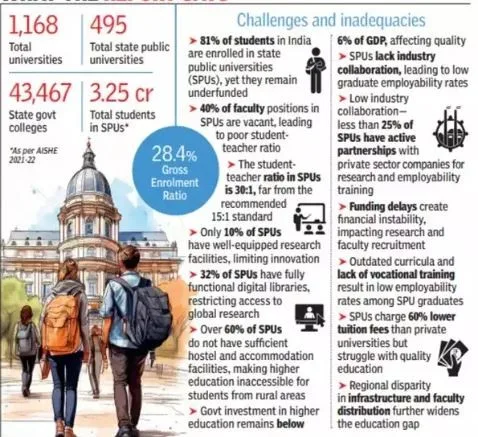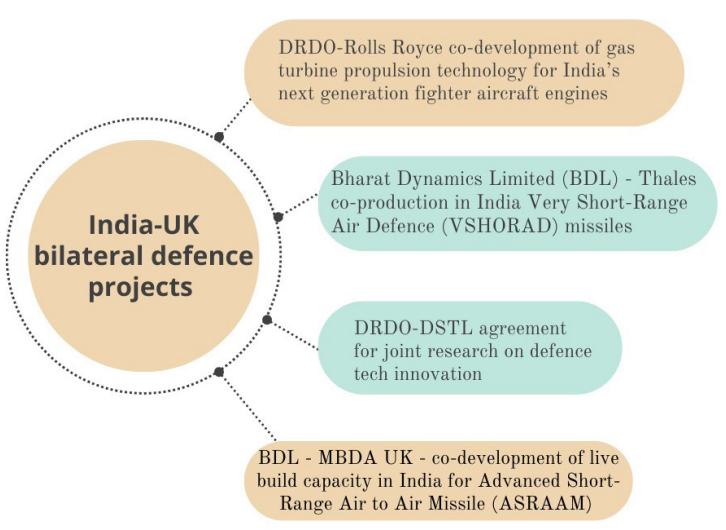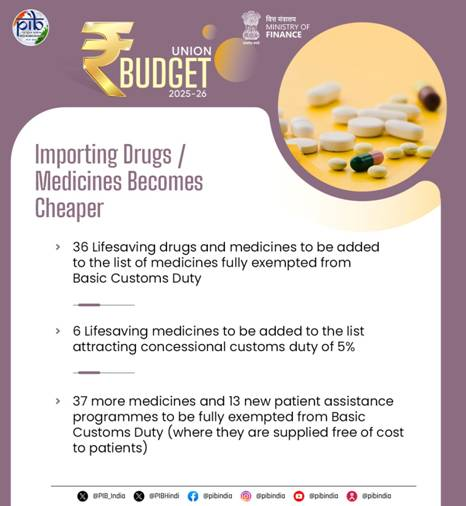NITI Aayog Releases Policy Report on State Public Universities (SPUs)
Syllabus: GS2/Education
Context
- NITI Aayog launched a policy report titled ‘Expanding Quality Higher Education through States and State Public Universities’.
About
- The report is a first-of-its kind policy document in the higher education sector focused specifically on States and State Public Universities (SPUs).
- State Public University (SPU) is a university established or incorporated by a Provincial Act or by a State Act can be termed a State (Public) University.
- It provides detailed quantitative analysis on vital indicators of Quality, Funding and Financing, Governance and Employability over the last decade across the themes.
Key Findings of Report
- Highest Funding: Maharashtra leads in higher education funding, followed by Bihar and Tamil Nadu.
- Lowest Funding: Sikkim, Arunachal Pradesh, and Nagaland have the lowest higher education budgets.
- University Density: The national average university density is 0.8.
- Sikkim has the highest density of 10.3, followed by Arunachal Pradesh, Ladakh, Himachal Pradesh, Meghalaya and Uttarakhand.
- In Bihar, Uttar Pradesh, West Bengal and Maharashtra, density at the state level is below the national average.
- Female Enrolment: Kerala, Chhattisgarh and Himachal Pradesh have higher female enrolment rates than males.
Challenges
- Dearth of good quality infrastructure.
- Shortage of faculty and staff.
- Insufficient expenditure on R&D.
- There is a low enrolment of students at the MTech and Ph.D. levels, presenting a significant challenge in fostering advanced research and academic growth.
- Courses, syllabus, curriculum not being industry-ready.
- Issues in funding: They face financial challenges due to dependency on traditional revenue sources such as admission fees and state grants.
- There are administrative delays in fund sanctioning along with the lack of framework for bank loans as major challenges for funding and financing of SPUs.

Recommendations
- It has presented nearly 80 policy recommendations to address various issues related to four areas of SPUs: quality of education; funding and financing; governance; and employability among students enrolled in them.
- Increasing the combined investment of Centre and States on education to 6% of GDP as recommended in NEP 2020.
- Increasing the R&D Investment (public and private) to 2% of GDP as recommended in the Economic Survey 2017-18.
- Clusters of SPUs should identify 2 to 3 local issues and establish Centres of Excellence dedicated to addressing these challenges.
- States may consider establishing a finance agency similar to the Higher Education Financing Agency (HEFA), dedicated specifically to SPUs.
- HEFA is a joint venture of the Centre and Canara Bank set up in 2017.
- This agency should focus on bolstering infrastructure and research facilities.
India-UK Defence Collaboration
Syllabus: GS2/International Relations
Context
- India and the United Kingdom have signed multiple agreements aimed at enhancing bilateral defence collaboration.
Key Agreements and Collaborations
- Defence Partnership–India (DP-I): Establishment of a dedicated programme office within the UK’s Ministry of Defence to serve as a one-stop hub for bilateral defence collaboration.
- Aims to facilitate deeper cooperation and support economic growth in both countries.
- Laser Beam Riding MANPADs (LBRM): India and the UK signed a contract for the delivery of Laser Beam Riding Man Portable Air Defence Systems (MANPADS).
- The initial supply of High Velocity Missiles (STARStreak) and launchers is set for delivery this year.
- Lightweight Multirole Missiles (LMM): Focuses on integrating Indian and British industries into the global defence supply chain.
- Advanced Short-Range Air-to-Air Missile (ASRAAM): Collaboration to establish an ASRAAM assembly and testing facility in Hyderabad.
- Integrated Full Electric Propulsion (IFEP) System: A Statement of Intent was signed to design and develop an Integrated Full Electric Propulsion (IFEP) system for India’s next-generation Landing Platform Dock (LPD) fleet.
- Both nations are working to establish India’s first maritime Land-Based Testing Facility, with a goal to deliver the LPD in water by 2030.

| Defense Cooperation Between India and UK – Over the past decade, only about 3% of India’s defence acquisitions came from the UK. – Modern Collaborative Frameworks: 1. Defense and International Security Partnership (DISP), 2015: It aims to enhance cooperation in areas such as counter-terrorism, cyber security, and defense manufacturing. 2. Defense Equipment Memorandum of Understanding (MoU): It facilitates collaboration between defense industries of both countries, promoting co-development and co-production initiatives. 1. India-UK 2+2 Foreign and Defence Dialogue. – Joint Military Exercises and Training: 1. Exercise Ajeya Warrior; 2. Exercise Konkan; 3. Exercise Cobra Warrior; 4. Exercise Tarang Shakti. – Defense Industrial Collaboration: A Letter of Arrangement was signed between India’s DRDO and the UK’s DSTL to collaborate on defense research, emphasizing areas like Electric Propulsion Systems for the Indian Navy. – Maritime Cooperation: Promoting freedom of navigation and open access, and improving maritime cooperation, with a new Maritime Dialogue, Grey and Dark Shipping information sharing and mechanisms. |
Key Concerns
- India-UK defence cooperation has often been derailed by the ‘three-I’ challenge posed by Indian rules and regulations pertaining to:
- Foreign Investment;
- Intellectual Property Rights;
- Indigenous Content Requirements.
Strategic Significance
- These agreements represent a significant step forward in India-U.K. defence cooperation, particularly in critical areas such as air defence and maritime propulsion.
- It aligns with India’s Atmanirbhar Bharat (self-reliant India) vision, promoting indigenous defence capabilities and technological advancements.
India’s Pharmaceutical Exports Set for 10x Growth
Syllabus: GS 3/Economy
In News
- India’s Pharmaceutical exports are projected to reach $350 billion by 2047, a 10-15 times increase from current levels.
About India’s Pharmaceutical industry
- It has gained international recognition as the “Pharmacy of the World,” particularly for its imperative role in supplying vaccines, essential medicines, and medical supplies during the COVID-19 pandemic and beyond.
- The sector has showcased its innovative capabilities and established itself as a crucial global pharmaceutical value chain member.
Current Status in the Global Market:
- India is the largest supplier of generic drugs globally, accounting for 20% of global sales.
- India ranks third globally in drug and pharmaceutical production by volume.
- India exports to approximately 200 countries and territories.
- The top five destinations for these exports are the USA, Belgium, South Africa, the UK, and Brazil.
- India ranks 11th in pharmaceutical export value, despite being a major global supplier of generics.
- The total annual turnover of pharmaceuticals in FY24 was ₹4.17 lakh crore, growing at an average rate of 10.1 per cent in the last five years.
Export Projections
- India’s pharmaceutical exports are expected to grow from $27 billion in 2023 to $65 billion by 2030.
- The shift from volume-based to value-driven growth is key to India’s pharmaceutical sector.
- Focus areas for growth include ActivePharmaceutical Ingredients (APIs), biosimilars, and specialty generics.
- API Market Growth: India’s API exports are projected to grow from $5 billion to $80-90 billion by 2047.
- Global supply chain diversification, particularly due to the U.S. Biosecure Act, presents an opportunity for India to strengthen API production.
- Biosimilars Market Growth: Indian biosimilar exports, currently valued at $0.8 billion, are expected to grow fivefold to $4.2 billion by 2030 and $30-35 billion by 2047. Increased R&D, regulatory simplifications, and capacity expansion will support this growth.
- Biosimilars are medications that closely resemble biologic drugs, produced through living systems such as yeast, bacteria, or animal cells, and exhibit comparable structure and function.
- Generic Formulations Growth: Generic formulations make up 70% of India’s pharmaceutical exports, valued at $19 billion.
- These are projected to grow to $180-190 billion by 2047, with a shift towards higher-margin specialty generics.
- API Market Growth: India’s API exports are projected to grow from $5 billion to $80-90 billion by 2047.
Policy and Strategic Measures
- The Government of India has implemented several initiatives to promote the pharmaceutical sector and boost investment.
- In September 2020, the government introduced the Production Linked Incentive (PLI) scheme for the pharmaceutical sector under the Self-Reliant India initiative, with a financial outlay of worth Rs.15,000 Crore, and the scheme duration is from 2020-2021 to 2028-29.
- Now ,there is a need for targeted policy measures, strengthening the API industry, addressing export barriers, and establishing country-specific export strategies.
- India supplies 55-60% of UNICEF’s vaccines but needs to focus more on high-value markets via clinical trials and manufacturing investments.
- Regulatory harmonization, expansion of production-linked incentives (PLI), and R&D incentives will be key enablers.

Challenges
- India is dealing with several challenges, including tackling intellectual property rights, lack of research and development etc.
- Understanding the political, economic, sociocultural, technological, environmental, and legal factors is vital for assessing the opportunities and challenges in the pharmaceutical market in India.
Conclusion and Way Ahead:
- India is already a global leader in generic drug supply and aims to move up the value chain with specialty generics, biosimilars, and innovative products.
- This shift could help India secure a position among the top five nations in export value by 2047.
- India has set its goal to be the “healthcare custodian of the world,” with a focus on innovation, R&D, and regulatory processes. And collaboration between academia, industry, and government is key to building a globally competitive pharmaceutical sector.
Budget Allocation for Research, Development and Innovation
Syllabus: GS3/Science and Technology
Context
- The Union Budget has allocated ₹20,000 crore to the Ministry of Science and Technology (MoST) for research, development and innovation.
Background
- Last year, in the interim Budget ₹1 lakh crore was announced for a fifty-year interest-free loan.
- It will provide long-term financing or refinancing with long tenures and low or nil interest rates.
- This will encourage the private sector to scale up research and innovation significantly in sunrise domains.
Significance
- This will be a major step towards creating strategic autonomy in some key technology sectors.
- The budget introduces several initiatives that align closely with DBT’s mission to advance India’s biotechnology sector.
- The budget’s focus on public-private partnerships, industry collaboration, and technology-driven entrepreneurship will accelerate innovation in manufacturing, healthcare, sustainability, and strategic sectors.
India’s Spending on R&D:
- India currently spends less than 1% of its GDP on research and development, which is low compared to technologically advanced countries.
- A major reason for this is the limited participation by the private sector — now hovering around 30% — in core research and development.
Need for Funding in R&D
- Economic Growth: Drives new industries, improves productivity, and enhances global competitiveness.
- Technological Advancement: Facilitates breakthroughs in fields like AI, biotechnology, and renewable energy.
- Social Challenges: Helps address poverty, healthcare, education, and environmental sustainability issues.
- Job Creation: Innovation generates employment opportunities and stimulates entrepreneurship.
- Global Positioning: Positions India as a global leader in science, technology, and knowledge.
- Attracts Investment: Promotes foreign and domestic investments in research-driven sectors.
Challenges
- Funding Issues: Limited investment in research and development, especially in public institutions.
- Infrastructure Gaps: Inadequate research facilities and resources in many institutions.
- Brain Drain: Loss of talent to other countries due to better opportunities abroad.
- Lack of Industry Collaboration: Limited partnerships between academia and industry for practical innovation.
- Skill Gaps: Insufficient training and development of skilled researchers and innovators.
- Regulatory Challenges: Complex regulations and intellectual property issues hinder innovation.
Government Initiatives
- The National Geospatial Mission has been announced with an allocation of Rs 100 crore for FY 2025-2026 to develop foundational geospatial infrastructure and data.
- The mission will help implement the National Geospatial Policy 2022, with the goal of making India a world leader in the geospatial sector.
- The National Mission on High Yielding Seeds will focus on strengthening the research ecosystem and developing high-yielding, pest-resistant, and climate-resilient seeds, aligning with DBT’s efforts in agricultural biotechnology.
- National Manufacturing Mission (NMM): Aligned with the government’s ‘BioE3 Policy’ for fostering high-performance biomanufacturing, the NMM announced in the Budget aims to accelerate technology development and commercialisation.
- The Seaweed Mission and Learn & Earn Program empower women entrepreneurs, supporting economic inclusion.
Way Forward
- With the recent initiative Startups and other private sector ventures will obtain seed money for their projects and are expected to get benefitted.
- However to raise R&D spending there is a need to have increased partnership with the private sector.
- Efforts are being made to create better synergies between industry, research labs, and educational institutions in order to broad-base both research activity and the funds to support it.
- The Union Finance Minister has also announced several initiatives including the Nuclear Energy Mission, initiatives in clean tech, Atal Tinkering Labs, and the Centre of Excellence on AI in Education.